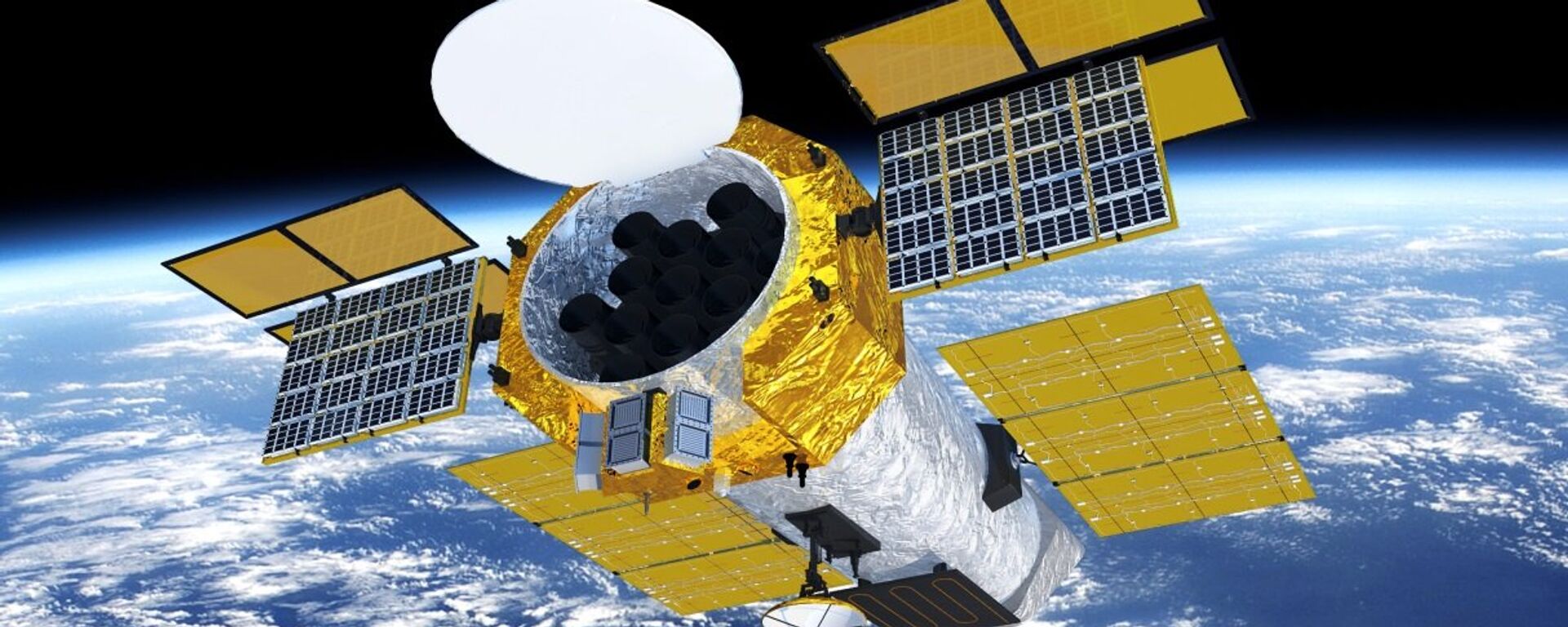https://sputnikglobe.com/20220119/in-space-no-one-can-hear-you-heal-iss-testing-device-that-makes-band-aids-from-astronauts-skin-1092367335.html
In Space, No One Can Hear You Heal: ISS Testing Device That Makes Band-aids From Astronauts’ Skin
In Space, No One Can Hear You Heal: ISS Testing Device That Makes Band-aids From Astronauts’ Skin
Sputnik International
The equipment was delivered to the station in December aboard a SpaceX resupply vessel together with a number of other experiments. 19.01.2022, Sputnik International
2022-01-19T11:41+0000
2022-01-19T11:41+0000
2023-04-12T16:57+0000
international space station
bandage
space
https://cdn1.img.sputnikglobe.com/img/07e6/01/13/1092365540_1:0:950:534_1920x0_80_0_0_9acc9abe7e42773bb2c88078a39e1b32.jpg
Astronauts aboard the International Space Station are set to start testing of the ‘Bioprint FirstAid Bioprinter’, a device that creates organic bandages to heal injuries using patients’ own cells.The portable, handheld and simple-to-use bioprinter looks similar to a tape dispenser, and consists of a dispensing device, print head, guide wheels, two bio-ink cartridges and a handle. According to NASA, the printing process takes just 10 minutes, with the tissue-forming band-aids, consisting of human skin cells taken from the patient’s fatty tissue and a special crosslinking material, covering wounds and allowing for healing to take place at an accelerated pace.The device was developed by the German Aerospace Center – the country’s national center for aerospace, energy and transportation research and de-facto space agency within the European Space Agency.The test device currently aboard the ISS will not contain real skin cells. Testing will involve a simulant gel applied to the limbs or other body parts of crew members wrapped in foil. However, the tests are expected to determine the convenience (or lack thereof) of the device and the strength of the resulting organic bandages. Additionally, developers are interested in the distribution pattern of the bandage samples printed in space compared to those printed on Earth.The bioprinter technology could have a number of useful applications –including the creation of efficient and cost-effective means to improve treatment of injuries in a timely manner. The device may also have uses on Earth, with NASA touting the advantages of using cultured cells farmed directly from the patient –virtually ruling out immune system rejection and allowing for “a safe regenerative and personalised therapy”, plus the device’s portability.The bioprinter is just one of a number of goodies sent to the ISS during the 21 December SpaceX Dragon resupply mission, during which nearly 3,000 kg of supplies and equipment were delivered, including a new study of monoclonal antibodies, cancer treatment experiments, antibiotic resistance in microgravity tests, a heat-resistant alloys probe, trials on the impact of microgravity on plant roots and shoots, and a new detergent by Tide.
https://sputnikglobe.com/20201230/japan-to-develop-worlds-first-wooden-satellites-by-2023-to-reduce-space-junk-1081604255.html
international space station
Sputnik International
feedback@sputniknews.com
+74956456601
MIA „Rossiya Segodnya“
2022
News
en_EN
Sputnik International
feedback@sputniknews.com
+74956456601
MIA „Rossiya Segodnya“
Sputnik International
feedback@sputniknews.com
+74956456601
MIA „Rossiya Segodnya“
international space station, bandage, space
international space station, bandage, space
In Space, No One Can Hear You Heal: ISS Testing Device That Makes Band-aids From Astronauts’ Skin
11:41 GMT 19.01.2022 (Updated: 16:57 GMT 12.04.2023) The equipment was delivered to the station in December aboard a SpaceX resupply vessel together with a number of other experiments.
Astronauts aboard the International Space Station are set to start testing of the ‘Bioprint FirstAid Bioprinter’, a device that creates organic bandages to heal injuries using patients’ own cells.
The portable, handheld and simple-to-use bioprinter looks similar to a tape dispenser, and consists of a dispensing device, print head, guide wheels, two bio-ink cartridges and a handle.
According to NASA, the printing process takes just 10 minutes, with the tissue-forming band-aids, consisting of human skin cells taken from the patient’s fatty tissue and a special crosslinking material, covering wounds and allowing for healing to take place at an accelerated pace.
The device was developed by the German Aerospace Center – the country’s national center for aerospace, energy and transportation research and de-facto space agency within the European Space Agency.
The test device currently aboard the ISS will not contain real skin cells. Testing will involve a simulant gel applied to the limbs or other body parts of crew members wrapped in foil. However, the tests are expected to determine the convenience (or lack thereof) of the device and the strength of the resulting organic bandages. Additionally, developers
are interested in the distribution pattern of the bandage samples printed in space compared to those printed on Earth.
The bioprinter technology could have a number of useful applications –including the creation of efficient and cost-effective means to improve treatment of injuries in a timely manner. The device may also have uses on Earth, with NASA touting the advantages of using cultured cells farmed directly from the patient –virtually ruling out immune system rejection and allowing for “a safe regenerative and personalised therapy”, plus the device’s portability.
The bioprinter is just one of a number of goodies sent to the ISS during the 21 December SpaceX Dragon resupply mission, during which nearly 3,000 kg of supplies and equipment were delivered,
including a new study of monoclonal antibodies, cancer treatment experiments, antibiotic resistance in microgravity tests, a heat-resistant alloys probe, trials on the impact of microgravity on plant roots and shoots, and a new detergent by Tide.

30 December 2020, 00:02 GMT



